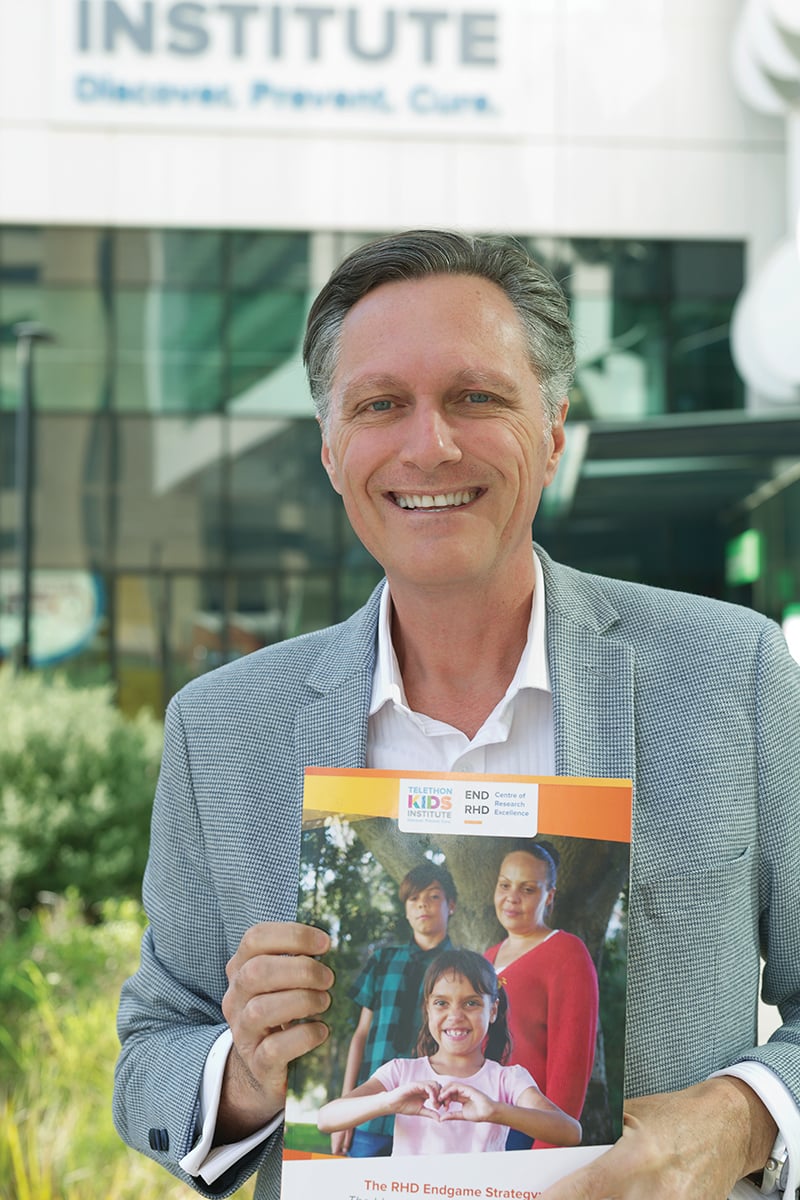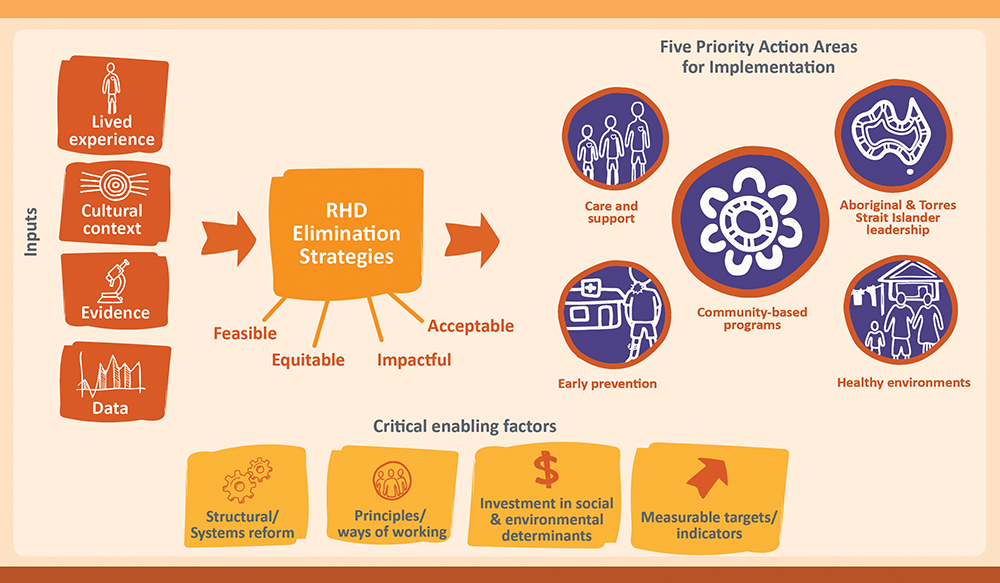 Professor Jonathan Carapetis has made eliminating rheumatic heart disease his life’s work, and nearly 30 years into the task he’s never been more confident the end is in sight.
Professor Jonathan Carapetis has made eliminating rheumatic heart disease his life’s work, and nearly 30 years into the task he’s never been more confident the end is in sight.
But his optimism relies on government funding and facilitating a series of vital strategies identified in a recently released blueprint – designed to wipe out the disease within a decade.
It’s a disease many people have never even heard of – and for good reason, since for most Australians it was eliminated almost half a century ago – but for thousands of Aboriginal and Torres Strait Islander people, rheumatic heart disease (RHD) is still very much a reality.
Caused by Strep A bacteria, RHD starts with a sore throat or a skin sore. Without appropriate treatment, these problems can spark an abnormal immune reaction in the heart, leading to life-threatening damage to the heart valves. Many children who end up with RHD require open heart surgery and lifelong medical treatment. Others – their cases picked up too late – simply die.
All that could change thanks to a comprehensive strategy released late last year following years of intense collaboration between researchers, Aboriginal and Torres Strait Islander leaders, communities and people with lived experience of RHD and its precursor, acute rheumatic fever (ARF).
Compiled over five years by the END RHD Centre for Research Excellence, an Australia-wide collaboration based at The Kids Research Institute Australia since 2015, the RHD Endgame Strategy lays out a blueprint that would allow the Federal Government to meet its commitment to eliminate RHD in Australia by 2031.
The Strategy, endorsed by 26 leading health and research organisations and launched in September 2020, reviews current and potential strategies to fight ARF and RHD and identifies five Priority Action Areas which, collectively, have the greatest potential to achieve elimination.
Chief among them is the requirement that action must be led by Aboriginal and Torres Strait Islander people, with community-based programs focused on healthy environments, early prevention, and care and support for those who already have RHD.
The Kids Research Institute Australia Director Professor Jonathan Carapetis – one of the world’s leading experts on RHD and senior author of the Endgame Strategy – said the Strategy marked the first time a comprehensive evidence base had been developed showing how RHD could be eliminated.

He said RHD was a disease usually only seen in developing countries, yet Aboriginal and Torres Strait Islander people had some of the highest rates in the world, with more than 5,000 living with RHD or ARF.
“Without implementation of the Endgame Strategy, this number will more than double in the next decade,” Professor Carapetis said. “At least another 8,000 Aboriginal and Torres Strait Islander children will develop ARF or RHD by 2031 if we simply stick with business as usual.
“Of these people, 650 will likely die and 1,300 will need open heart surgery.

"Australia has an obligation to act."
Since its launch the Endgame Strategy has informed updates of RHD Action Plans in Queensland and the Northern Territory; and the National Aboriginal Community Controlled Health Organisation (NACCHO) is hoping to host a national implementation unit for the Strategy.
In February 2019 the Federal Government announced it was committing $35 million to develop a vaccine to prevent RHD and other life-threatening conditions caused by Strep A – work The Kids is heavily involved with as a key partner in the Australian Strep A Vaccine Initiative (ASAVI). Global philanthropic organisation, Open Philanthropy, has also contributed US$5.3 million to fund the Strep A vaccine clinical trial.
Following the Endgame Strategy’s release, the 2021/22 Federal Budget included $12.1 million for continued support of RHD control programs, with another $12.8 million to be invested tackling RHD over the coming four years.
But lead author of the Endgame Strategy and END RHD Head of Strategy, Dr Rosemary Wyber, said that while this re-funding of existing strategies would help, continuation funding alone would not change the trajectory of RHD in Australia.
“The RHD Endgame Strategy makes it clear that a transformative shift to Aboriginal and Torres Strait Islander leadership and substantive ongoing investment to address the structural, social and environmental determinants of health are also needed,” Dr Wyber said.
What's next
- The Endgame Strategy is helping to guide discussions on the development of a WA RHD Action plan
- The END RHD coalition, including all the major peak bodies for Aboriginal Community Controlled Health Organisations in jurisdictions where RHD is a significant problem, is championing the implementation of the Endgame Strategy



